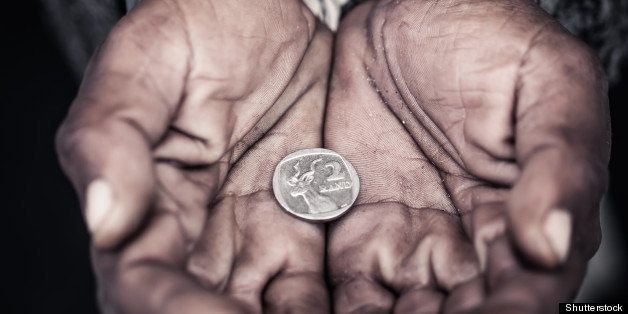
On June 1, The Economist published a briefing that articulates an "astonishing chance to take a billion people out of extreme poverty." Innovation and entrepreneurship are central to realizing this opportunity for large-scale poverty reduction. Almost two years ago, Xconomy reported our vision to benefit the lives of 1 billion people based on a decade of success in our GSBI capacity-development program. The strategy is simple: help more social entrepreneurs help more people. Impact investors and social entrepreneurs will realize that this strategy is much more easily said than effected: measuring social impact is challenging at best -- outputs are more frequently reported than outcomes; scaling includes dimensions of breadth (number of lives impacted) as well as depth (perceived value or utility of the impact); and, comparison within and across sectors cannot readily be reduced to a common set of metrics, as is the case with financial-first ventures.
Having trained as a neuroscientist, I tend to think in terms of experiments. Our experimental design leverages the GSBI's first decade of experience and proven mentoring methodology: the 167 social enterprises we've worked with intensively have collectively benefited nearly 100 million people. We are conducting three parallel experiments in scaling social impact. First, we are providing basic business model training to as many early-stage social entrepreneurs as possible to help them build sustainable organizations, whether nonprofit, for-profit, or hybrid. Online learning technology plays a critical role in this experiment. We have successfully piloted the GSBI Online program in partnership with World Bank, achieving high marks from the social enterprises and an 84% completion rate, far above the average of 6.8% for MOOCs. Training 100-fold more social entrepreneurs who each impact 1/10 the average number of lives of our GSBI Alumni would achieve the 1 billion goal.
The second experiment tests the power of network effects in scaling impact. Working with other Jesuit and mission-aligned organizations, we are in essence "incubating incubators" by creating a network of GSBI-like programs, adapted to the local context. Several of these are already training social entrepreneurs. ESADE, one of the top business schools in the world, was inspired by the GSBI to create its Momentum Project tailored to social needs of Spain -- namely, unemployment -- and emerged "like a son or daughter of the GSBI," according to Director Alfred Vernis. Our partnership in launching Villgro's SEED program as a model of inspiration and knowledge partner represents an open-source approach to capacity development. More partnerships for launching social enterprise incubators are in the pipeline -- in the Philippines, India, East Africa, Mexico, and Colombia, for example. Helping 10-fold more social entrepreneurs through a network of incubators who each have the same average impact would also achieve the 1 billion goal.
The third experiment is a radical evolution of our core GSBI Accelerator program. It tests whether engaging other ecosystem stakeholders in capacity development program design can accelerate the rate of social enterprise scaling. The basic business model training modules that evolved over the first decade of the GSBI now form the core of the GSBI Online program. Instead, GSBI Accelerator mentors and content are chosen to help each enterprise close business plan gaps that impede investments necessary to scale impact by an order of magnitude or more; a group of 12 impact investors is involved in gap assessment. Our first cohort in this ambitious experiment is now well underway. Helping social enterprises have 10-fold the average impact of GSBI alumni thus far would also achieve the 1 billion goal.
Our design thus has at least three potential paths to success, but which of these experiments in scaling social impact is most likely to work? Our working hypothesis is that different forms of impact require different scaling strategies. In their upcoming book, The Business Solution to Poverty, Paul Polak and Mal Warwick articulate a strategy to design and deliver products to at least 100 million $2 per day customers. Only 10 successful companies of this sort would be required to meet the 1 billion goal. However, safe drinking water, energy, nutritious food and drink are only a few of the needs of the poor. Cultural context may limit the ability of single enterprises focused on social needs such as gender equality, education, and political freedom to scale globally. For some of these, identifying successful practices and sharing them among a network of capacity development programs may prove the fastest route to effective impact scaling. Many early-stage technology innovations and new ideas could benefit from basic business model training to help discern which can have meaningful impact, enabling entrepreneurs to learn from failure and try again, a paradigm to which we subscribe in these experiments.
